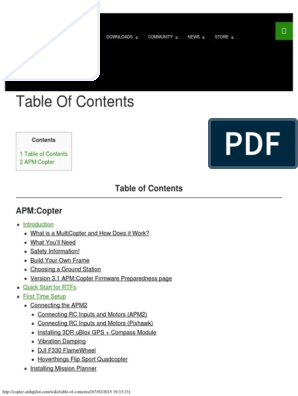0% found this document useful (0 votes)
25 views2 pagesFlowchart
The document outlines the installation and setup of firmware for an advanced sensor suite used in precision flight applications, detailing required tools and steps for flashing ArduPilot firmware. It also describes compatible ground control stations, telemetry options, and various UAV frame types supported, including multirotors and fixed-wing vehicles. Additionally, it provides a workflow for firmware customization, including tools needed and steps for modifying and testing the code.
Uploaded by
shitalbandal445Copyright
© © All Rights Reserved
We take content rights seriously. If you suspect this is your content, claim it here.
Available Formats
Download as DOCX, PDF, TXT or read online on Scribd
0% found this document useful (0 votes)
25 views2 pagesFlowchart
The document outlines the installation and setup of firmware for an advanced sensor suite used in precision flight applications, detailing required tools and steps for flashing ArduPilot firmware. It also describes compatible ground control stations, telemetry options, and various UAV frame types supported, including multirotors and fixed-wing vehicles. Additionally, it provides a workflow for firmware customization, including tools needed and steps for modifying and testing the code.
Uploaded by
shitalbandal445Copyright
© © All Rights Reserved
We take content rights seriously. If you suspect this is your content, claim it here.
Available Formats
Download as DOCX, PDF, TXT or read online on Scribd
/ 2











































































